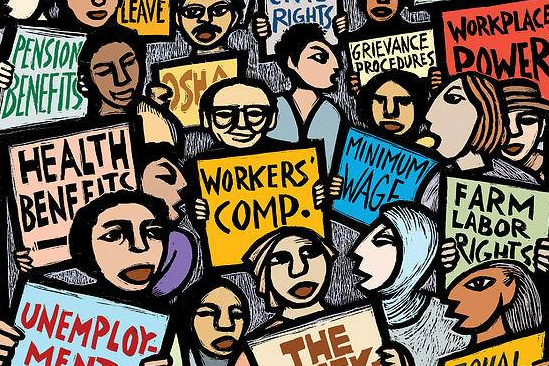
Canada’s 2025 Budget Puts Workers and Newcomers at the Centre of Economic Renewal
Canada’s forthcoming federal budget — tabled November 4, 2025 — promises wide-ranging changes intended to strengthen the labour market, speed newcomer integration, and close urgent skills gaps. Announced by Finance Minister François-Philippe Champagne, Budget 2025 focuses on practical supports that help workers remain employed, reskill quickly, and seize new opportunities in growing sectors. Crucially for immigrants, the plan targets long-standing barriers such as foreign-credential delays, limited access to training, and regionally fragmented job markets.
Taken together, the measures in Budget 2025 signal a policy shift: Canada will invest directly in workforce pathways that convert foreign training and experience into Canadian employment outcomes, accelerate credential recognition, and expand paid, employer-driven routes into in-demand trades and professions.
Major measures affecting workers and newcomers
$97 million Foreign Credential Recognition Action Fund
A five-year, $97-million fund will be dedicated to speeding up and standardizing the licensing and recognition process for internationally trained professionals. The fund aims to reduce delays for regulated professions (healthcare, engineering, construction and other in-demand fields), increase transparency about requirements and timelines, and support bridging and evaluation programs so newcomers can enter their occupations faster.
Expected outcomes: shorter wait times for licensing decisions; clearer steps for applicants; faster entry of qualified newcomers into critical occupations.
$50 million National Digital Jobs and Training Platform
Budget 2025 allocates $50 million over five years (with ongoing funding) to build a national digital platform that centralizes job listings, streamlined application tools, and online training modules. Developed in partnership with the private sector, the portal is intended to make job search and upskilling more efficient and accessible across provinces and regions.
Why it matters: a single national hub reduces friction between employers and job-seekers and helps newcomers identify positions and training that match their credentials and experience.
$1,100 Annual Support for Personal Support Workers (PSWs)
To recognize and retain frontline care workers, the budget introduces a refundable tax credit for eligible Personal Support Workers. The credit equals 5% of qualifying earnings up to $1,100 annually for five years in jurisdictions that have not agreed to federal wage-increase arrangements.
Impact: improved earnings for care workers in regions without negotiated wage increases, helping address staffing shortfalls in long-term care and community supports.
Expanded Reskilling, Apprenticeship and Labour Mobility Supports
The budget strengthens existing labour-market programs with targeted funding:
- $570 million through Labour Market Development Agreements (LMDAs) to support retraining and rapid re-employment.
- $382.9 million over five years for Workforce Alliances and an Innovation Fund to help employers hire and retain workers in priority sectors.
- $75 million for the Union Training and Innovation Program over three years to expand seats and supports for Red Seal and other skilled-trades apprenticeships.
- Additional investments to expand temporary EI work-sharing flexibility and $3.6 billion in enhanced EI income supports for workers affected by trade disruptions or market instability.
These measures combine income protection with active reskilling so affected workers — including immigrants with transferable skills — can move into new opportunities without prolonged income loss.
Restricting Non-Compete Clauses in Federally Regulated Sectors
Budget 2025 proposes constraining the use of non-compete agreements in federally regulated industries, enabling greater worker mobility, entrepreneurship and wage competition across employers in banking, telecommunications, transport and other regulated sectors.
Effect: easier career mobility, stronger bargaining power for employees and more dynamic business formation.
How Budget 2025 specifically helps immigrants
- Faster access to licensed work — Credential recognition funding targets the long delays that keep skilled newcomers out of their professions.
- Clearer pathways to employment — The national digital platform links employer demand with training and credentials, reducing guesswork for internationally trained candidates.
- Targeted income and reskilling supports — LMDA investments and EI enhancements provide both income continuity and retraining for displaced or transitioning workers.
- Expanded trades access — Increased apprenticeship seats and union-led programs create paid routes into stable careers, which are often accessible to newcomers.
- Improved regional retention — Workforce alliances and provincial partnerships aim to match newcomers with local labour needs and supportive employer networks.
Voices from government and outlook
Finance Minister François-Philippe Champagne framed the budget as a worker-first agenda focused on fairness, training and national economic resilience. Other cabinet members emphasized inclusion and the role of newcomers in meeting Canada’s demographic and skills challenges. Officials say implementation will roll out through federal-provincial agreements and partnerships with industry and unions.
Across policy circles, observers say the budget represents a pragmatic emphasis on converting immigrant skills into Canadian jobs and on cushioning workers from trade and technology shocks. The success of these initiatives will depend on timely program design, cooperation with provinces and regulators, and adequate administrative capacity — especially for accelerating credential recognition and building the digital platform.
Who benefits most and immediate next steps
Primary beneficiaries: internationally trained professionals, caregivers and tradespeople, workers affected by market disruption, apprentices, and newcomers seeking rapid labour-market entry.
Short-term actions for newcomers and employers:
- Newcomers should track credential-recognition reforms and prepare required documentation to use the Action Fund supports.
- Skilled immigrants and employers should monitor rollout of the national digital platform to expedite hiring and training matches.
- Employers in healthcare, construction and trades should engage with Workforce Alliances to access funding and recruitment supports.
Final analysis
Budget 2025 is a comprehensive attempt to align immigration policy with labour-market realities: it targets the choke points that prevent newcomers from contributing fully, invests in rapid reskilling for displaced workers, and creates structural supports — digital, financial and regulatory — to improve mobility and wages. If implemented effectively, these measures could accelerate newcomer integration, relieve critical labour shortages, and raise long-term productivity across the economy.
For a consultation about Immigration options, reach out to the CAD IMMIGRATION today!





